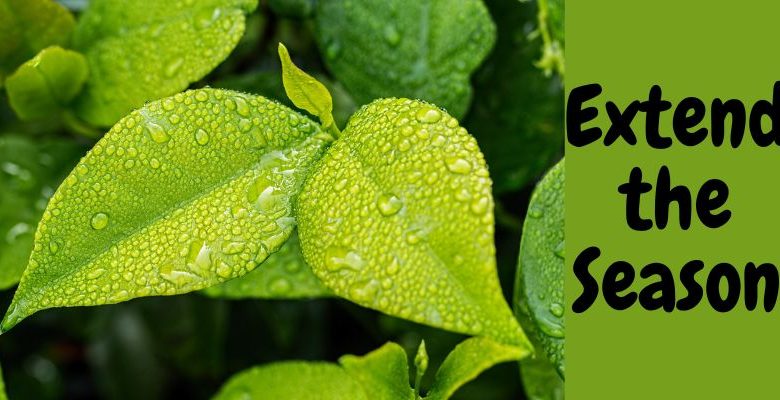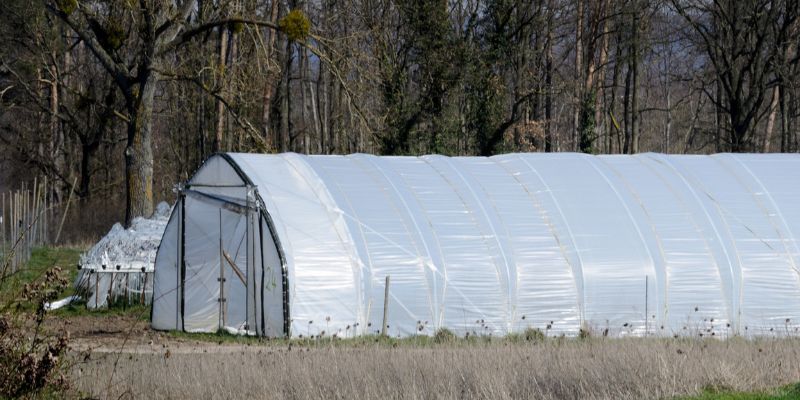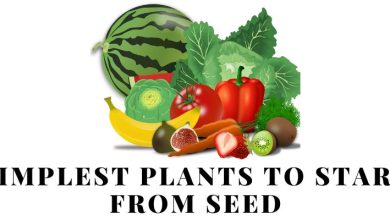
The duration of the growing season is rarely a point of satisfaction for gardeners. In the far North, melons or tomatoes hardly have time to mature. Only the spring and autumn seasons are suitable for gardening in the South due to drought and extreme heat.
The good news is that you can prolong your gardening season by two, three, or even six months by employing a few straightforward season-extending strategies and plant-protection tools.
Decrease exposure to weather
Strong winds will require more energy from the plants in your garden, which will prevent them from establishing robust root systems and putting on healthy development. You can erect a wood fence, grow trees and shrubs as a windbreak, or cover your yard with windbreak netting to shield it from the elements. Not to produce a calm sea, but to lessen the wind speed.
A fence on the garden’s side facing the direction of the predominant breeze might be sufficient. Try a temporary plastic mesh fence instead of a permanent fence or hedge if it would take too much time or money to install one, or cover your plants with polypropylene garden cloth, specialized covers, or cold frames. Garden fabric provides protection for seedlings, which frequently develop twice as fast as control plants.
Warm the soil up
If you cover your garden with a thick coating of mulch for winter protection, remember to remove the mulch from the planting beds in the early spring so the soil can receive sunlight. Another method for warming the soil more rapidly is to use raised beds. Black plastic can also raise the temperature of chilly spring earth by several degrees. Before planting, the plastic can either be removed or kept on the entire season.
Melons and other heat-loving plants will grow quickly if black plastic mulch is applied to the soil and combined with plant covers or yard fabric. Plants covered in garden fabric in the autumn will retain heat, keeping the soil several degrees warmer. This can extend the time it takes for heat-loving fruits, like tomatoes, okra, and peppers, to ripen by a few weeks.
Provide shade and heat relief
The heat can be just as challenging as the chill. Overheating can stress and stunt young plants, cause salad leaves to turn bitter and go to seed, and make it very difficult to get seeds to sprout. Shade netting helps ground and plants maintain moisture while keeping them cool. It can be placed directly over moving hardwood frames or wire hoops. The same function can be accomplished using a piece of wood lathe affixed to a frame.
Defend against spring and autumn frosts
For the majority of cultivators, frost poses a constraint in both spring and fall. All but the hardiest garden crops typically perish after one night of 32 degrees Fahrenheit. While cardboard boxes, sheets, and blankets make excellent emergency supplies, garden fabric (also known as row covers) is much more practical and efficient. These materials come in a range of layers, and some will provide protection down to 25 degrees F.
Even better cold protection can be provided by cold frames and portable greenhouses, which frequently enable you to continue harvesting cold-weather fruits well into the winter.

Methods for Extending the Harvest
Consider your area climate as a starting point. How much longer do you want the season to last and how much effort are you willing to put in? You will likely need to make an investment in a greenhouse and be ready to devote daily care if you live in a cold climate and want to prolong your harvest season all year long. On the other hand, the answer is simple and affordable if all you want is a few extra weeks of ripe tomatoes in the fall and salads a few weeks earlier in the spring.
The 30-day period: Your seedlings will germinate much more quickly if you can provide a protected growing environment that shields your plants from the scorching sun, chilly breeze, frost, and insects. For the first few weeks after transplanting, attempt to keep seedlings covered with garden fabric. Spun polyester or polypropylene garden fabrics are sun, air, and water permeable, allowing excess heat to exit and rainwater to travel through. All that needs to be done to care for your plants is a monthly check for weeds and water.
Other options for covering individual plants include milk containers made of plastic, coffee cans with the ends cut off, and tomato cages encased in transparent plastic. Just make sure the lid is vented, and keep an eye out for overheating symptoms.
The 60-day stretch: Extending your harvest season by two months by using garden fabrics in both spring and autumn. Use them as directed above in the spring, but in the autumn, use a heavier fabric to keep soil heat in and protect the foliage from frost damage.
Because some plant varieties are better adapted to early- or late-season production, picking the appropriate plant varieties can also have a big impact. Broccoli, for instance, has some varieties that do best in cold spring soils but rapidly set seed in warm weather. Other types can withstand heat, and still, others can flourish in the chilly late-fall weather and low light levels.
A three to four-month period: Protection tents and greenhouses can virtually year-round extend your harvest in many regions of the nation. It’s simpler than you might think to maintain a protected growing environment in the midst of extreme weather changes. Salad greens in February and tomatoes up until Thanksgiving are just a couple of the benefits that far exceed the costs.
Focusing your efforts is the secret to achievement. Concentrate on a small number of crops or one area of your yard. Root crops and salad leaves are the simplest. A 3 x 4 ft. swath of greens will yield enough salad ingredients for several months. It’s crucial to pick the appropriate varieties and stick to a regular planting timetable.
Growing covertly unlocks a fascinating new universe with substantial rewards. Imagine having a salad bar with fresh, organic vegetables available eight or ten months of the year right outside your door!
Read More to start Gardening:
Garden Soil || How To Make It Healthy
Beginning Seeds || Start Gardening Today
Techniques to Extend the Season
Sweet potato Harvesting, Curing, and Storage





8 Comments